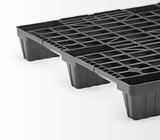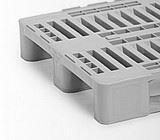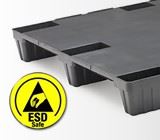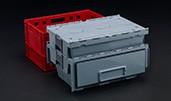Therefore, product damage during transport is so common that most companies accept this reality as a normal part of their logistics operations, to the point of converting damaged merchandise into a pre-calculated part of the total cost. of their business, but do we know the real reasons that lead to the merchandise spoiling? Next, the Naeco, (previously Nortpalet) team will introduce you to some of the main reasons.
Causes of Product Damage During Transport
The greatest cause of damage during transport occurs during the movement of cargo through forklifts, or trailers, among other elements. It also occurs when the products are incorrectly palletized, causing the merchandise placed on the pallet to move out of place and displace other products, causing the load to become unstable and for all the weight to fall on the products, leaving them finally crushed and /or broken. But these are not the only causes that keep product damage occurring. We present some of the most common situations:
• Inadequate packaging. Product packaging is not an exact science, especially in distribution centers, where loads from manufacturers are broken down to do what is known as picking or mixed product loads, to be shipped to retail stores. Canned foods, boxed drinks, and paper items can all end up on the same pallet and therefore there may not be a foolproof way to pack them together and make sure they do not move. On the other hand, wrapping a load too tightly can crush products and not doing so can cause the load to shift. Therefore, either of these two errors can cause damage to the product during transport.
• Damage to forklifts. Forklifts can damage the product when it is lifted. Some of the most common problems occur when the products that are inside bags, slip between the boards of a wooden pallet platform, are hooked by the forks, producing the tear of the bag and the displacement of the load, as that the product is emptied from said bag. Similarly, a distracted operator or emergencies can cause an impact of the fork against the pallet before passing through its windows in this way, destabilizing the load causing breakage and wastage., Deterioration during transport: It is known that pallets made of wood or other materials that are made of different pieces can come apart and spoil or break during the course of their useful life. Therefore, in this case, the damaged components become unstable and can cause the load to move during transport, causing it to shift and even overturn, damaging the content.
How to reduce product damage with plastic pallets
Although most manufacturers and distributors strive every day to take measures to prevent damage to the merchandise during its transfer, the truth is that they are not always effective. Do you want to know how to end this problem? Do not miss some guidelines to follow:
• Improve staff training. Giving warehouse workers training that gives them a clearer idea of how to pack, handle and ship pallets correctly is undoubtedly the best time invested to finally reduce product damage during transport and at the same time , save costs.
• Use plastic pallets. Another way to reduce product damage in the warehouse is by replacing wooden pallets with plastic pallets, since it is a very versatile product, made with a much more resistant and durable material. The use of this type of pallets offers greater security and better endurance when handling and moving the merchandise, managing to transport and deliver the product in an impeccable state. Being stable in weight and shape ensures that the product it contains does not move out of the pallet
• Shrink the pallets with transparent film. In order to prevent product from shifting, almost all pallet loads are recommended to be shrink-wrapped and / or strapped. In this way the load is consolidated, making it more compact and stable on the pallet.
Other elements: the versatility of plastic pallets offers in some models optional elements such as special stops to retain the load, rubbers on the board and skids or non-slip strips. They are optional elements that the customer can select and one of the objectives is to guarantee the stability of the load and reduce costs due to wastage.
Conclusion
Logistics equipment and solutions, designed to facilitate the transport of goods, as in the case of plastic pallets, are advancing by leaps and bounds every day with the aim of preventing products from being damaged during transport and companies losing by it a lot of money every year.
The high durability and waterproof nature of this type of pallets, among many other advantages, help, not only to reduce losses in transport spaces and warehouses that can damage the loading equipment, but also to limit the spread of product spills. chemicals, to improve hygiene and incidentally, to avoid contamination.
For these and many other reasons, the use of plastic pallets within the logistics chain of any company not only allows to reduce the damage of the products during transport but also to increase efficiency, reduce costs and facilitate the daily work of the employees.
And what measures does your company use to avoid the deterioration of merchandise during its transport? If you need more information or help on this subject, do not hesitate to ask our team.














